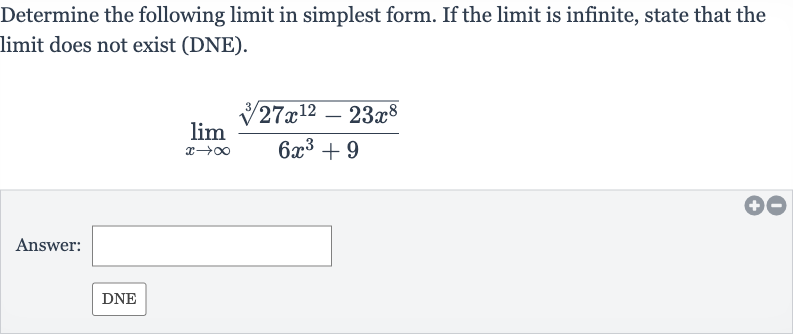Full solution
Q. Determine the following limit in simplest form. If the limit is infinite, state that the limit does not exist (DNE).Answer:
- Identify Powers of x: Identify the highest power of in both the numerator and the denominator.In the numerator, the highest power of inside the cube root is , and in the denominator, the highest power of is .
- Factor Out Highest Power: Factor out the highest power of from the cube root in the numerator.Since the highest power of inside the cube root is , we can factor out from the cube root (because ).The expression becomes:
- Simplify Cube Root: Simplify the cube root in the numerator.The cube root of is , so the expression simplifies to:
- Divide by : Divide every term by , the highest power of in the denominator.This gives us:
- Cancel in Numerator: Simplify the expression by canceling out from in the numerator.This simplifies to:
- Evaluate Limit at Infinity: Evaluate the limit as approaches infinity. As approaches infinity, approaches and approaches . The expression simplifies to:
- Calculate Cube Root: Calculate the cube root of and simplify the expression.The cube root of is , so the expression simplifies to:
- Divide by : Simplify the expression by dividing by . This simplifies to:
- Evaluate Limit at Infinity: Evaluate the limit as approaches infinity. As approaches infinity, also approaches infinity. Therefore, the limit does not exist (DNE).

